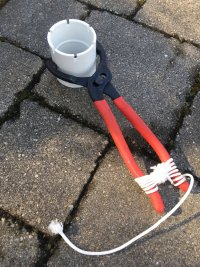Chschaus
"Voila"
I am finally stepping out of the dark ages and installing a new nav system.
Can anyone tell me if the B&G DST810 Transducer will fit in the old Datamarine Knotmeter thruhull sleeve?
The launch date is fast approaching and ai am not sure if replacing the entire thruhull is doable.
I might need to just use the new wind speed/ direction and hold off on the new depth and boat speed till next season.
The old Datamarine units do still work. BTW They came with the boat new in 1986
Can anyone tell me if the B&G DST810 Transducer will fit in the old Datamarine Knotmeter thruhull sleeve?
The launch date is fast approaching and ai am not sure if replacing the entire thruhull is doable.
I might need to just use the new wind speed/ direction and hold off on the new depth and boat speed till next season.
The old Datamarine units do still work. BTW They came with the boat new in 1986



